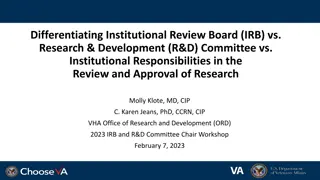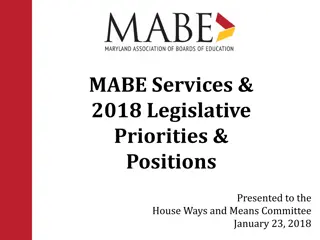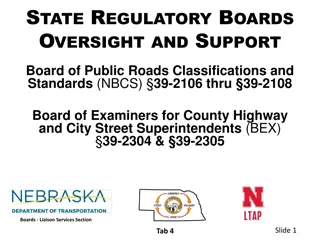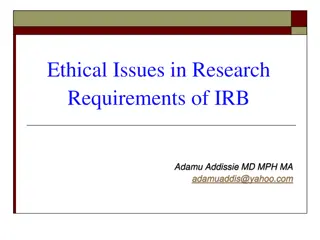Understanding the Role and Importance of Institutional Review Boards (IRBs)
Human research subjects need protection due to historical violations, leading to the establishment of IRBs like the CSUDH IRB team. Federal regulations, like the Common Rule, outline protections for vulnerable populations, and studies requiring IRB approval must meet specific criteria to ensure ethical treatment of human subjects.
- Research Compliance
- Institutional Review Board
- Human Subjects Protection
- Federal Regulations
- Ethical Research
Download Presentation

Please find below an Image/Link to download the presentation.
The content on the website is provided AS IS for your information and personal use only. It may not be sold, licensed, or shared on other websites without obtaining consent from the author. Download presentation by click this link. If you encounter any issues during the download, it is possible that the publisher has removed the file from their server.
E N D
Presentation Transcript
INSTITUTIONAL REVIEW BOARD (IRB) J U D I T H A G U I R R E R E S E A R C H C O M P L I A N C E O F F I C E R O F F I C E O F G R A D U A T E S T U D I E S A N D R E S E A R C H
CSUDH IRB TEAM IRB Chair Dr. Susan Einbinder Institutional Official Dean of Graduate Studies and Research Dr. Sheree Schrager Judy Aguirre IRB Analyst IRB Board Members 9 members, 1 alternate member Denise Aguiluz Student Assistant
WHY DO HUMAN RESEARCH SUBJECTS NEED PROTECTION? History of human research At times, the rights and welfare of subjects was not respected All institutions conducting human research are required to have an oversight body to oversee human subject research. The IRB is more than the IRB board. It is a comprehensive human subject protection program at CSUDH with all CSUDH IRB team members playing various roles with the overriding goal being the protection of human subjects.
HISTORICAL CONTEXT FOR THE NEED AND DEVELOPMENT OF IRBS The Nazi Experiments Nuremburg code 1947 Tuskegee Syphilis Study National Commission for the Protection of Human Subjects 1974 Belmont Report 1978 Common Rule (Federal Regulations) 1994
FEDERAL REGULATIONS COMMON RULE A federal policy regarding Human Subjects Protection that applies to 17 Federal agencies and offices. Applies to agencies that have signed an agreement to uphold the Common Rule Outlines the requirements for assuring compliance by researchers and their institutions Carves out protections for vulnerable populations. (Subparts B-D). Children Prisoners Pregnant Women, Fetuses, and Neonates
HOW DO I KNOW IF A STUDY NEEDS IRB APPROVAL? Meets federal definition of research Systematic investigation designed to develop or contribute to generalizable knowledge Meets definition of human subject(s) The investigator will gather data about living individuals through intervention or interaction OR The investigator will gather data about living individuals that is private and identifiable.
HOW DO I BEGIN THE IRB PROCESS Go to the IRB Home Page and follow the instructions to complete your application. https://www.csudh.edu/gsr/research/research-compliance/irb/ Submit IRB Submission to irb@csudh.edu.
REQUIRED HUMAN SUBJECTS TRAINING FOR IRB SUBMISSIONS Completion of human subject training CSUDH uses the CITI training platform Training must be renewed every 3 years There are social-behavioral, education and biomedical courses depending on the type of research being performed.
CRITERIA FOR APPROVAL Risks are Minimized Risks are Reasonable in Relation to Benefits Selection of Subjects is Equitable Informed Consent will be Sought for Each Prospective Subject Research Plan Adequately Protects the Privacy of Subjects and Maintains Confidentiality Dropbox When some or all of the subjects are likely to be vulnerable to coercion or undue influence, additional safeguards need to be included in the protocol to protect the rights and welfare of these subjects.
THE IRB HAS THE AUTHORITY TO: Approve the study Require modifications prior to approval Table Disapprove all research activities including proposed changes in previously approved human subject research
WHO SUBMITS THE PROPOSAL? Students should submit a proposal under the supervision of a faculty member. All individuals associated with CSUDH (faculty, staff, students) must submit a protocol if it meets the definition of human research. List the faculty mentor as the Principal Investigator and the students as the Co-Investigator
IRB REVIEW CATEGORIES OF RESEARCH All research projects are categorized into one of three categories for the IRB review process. Each category is different in the level of scrutiny and review process. The IRB is responsible for making the final decision of which a category a research project falls under. Full Expedited Exempt
FULL REVIEW CATEGORY For higher risk studies Requires a fully convened IRB committee review Check IRB Calendar posted on the IRB Homepage
EXPEDITED REVIEW CATEGORY Moderate risk protocols that meet specific federal criteria qualify for an expedited review (45 CFR 46.110) Expedited Categories The IRB Chair or designated primary reviewers review the IRB Submission Reviews occur throughout the month as IRB Submissions are received
EXEMPT FROM IRB REVIEW Involve low risk to human subjects. The IRB Analyst conducts these reviews Reviews occur throughout the month as IRB Submissions are received
CONSENT FORM ELEMENTS Statement that the study involves research Research is described Description of Risks Description of Benefits Disclosure of Alternatives Confidentiality If more than minimal risk, compensation and/or medical treatment Participation is voluntary Whom To Contact
Recruitment Methods: Describe how you will identify and recruit subjects. Submit a copy of the flyer or advertisement if you will be advertising for subjects. (If subjects will be identified through private records, the holder of the records must make the initial contact with the subject.) Include a statement about how the recruitment will ensure voluntary participation and not single out or embarrass individuals who choose not to participate. FORM B (PROPOSAL) Important to be specific as to how you will recruit subjects. For example, if you state snowball recruitment , describe where the snowball starts and how the recruitment will expand. Simply stating snowball recruitment is not sufficient. Secure permission to recruit from physical or virtual sites.
Secure Permission to Conduct Research from research sites. Includes Virtual research sites. EXAMPLES Letter from Principal Letter from Clinic Director Screenshot from Social Media Moderator
Identify Risks: Consider potential or known physical, psychological, social, and economic or legal risks that might be associated with participation in the research. These might be direct risks, or the result of a subject s name accidentally being linked to his/her responses. Discuss whether the risks are minimal (no greater than normal daily risks) or significant. FORM B (PROPOSAL) Psychological and social risks should be identified. Participation in research may result in undesired changes in thought processes and emotion (e.g. episodes of depression, feelings of stress, guilt, and loss of self-esteem) Stress and feelings of guilt or embarrassment may arise simply from thinking or talking about one's own behavior or attitudes on sensitive topics such as drug use, sexual preferences, selfishness, and violence. These feelings may be aroused when the subject is being interviewed or filling out a questionnaire.
Management of Risks: Describe precautions, safeguards, or other steps incorporated into the research activity to reduce or limit the severity or likelihood of harm. These might include extra precautions in storing data or coding personal identifiers. FORM B (PROPOSAL) For psychological risks, consider providing community resources or allowing participant to stop the study at any time without penalty Consider how you will safeguard data and separate personal identifiers from data
CAYUSE HUMAN ETHICS COMING SOON! The Cayuse Human Ethics platform is an online human subject research application management system used to electronically prepare, submit, and route research studies for IRB approval. All information is stored in the cloud and can be accessed securely from any location, making it simple for researchers/investigators to upload, edit, and submit human subjects research studies. Users receive electronic notifications whenever an action is required on their part, allowing the study to proceed smoothly through each step of the review process from study creation to final approval.
RESOURCES CSUDH IRB Homepage https://www.csudh.edu/gsr/researc h/research-compliance/irb/ -CSUDH IRB Templates -Online CITI Human Subject Training information Office for Human Research Protections (OHRP) https://www.hhs.gov/ohrp/index.ht ml
QUESTIONS? HTTPS://WWW.CSUDH.EDU/GSR/RESEARCH/RES E ARCH - COMPLIANCE/IRB/























